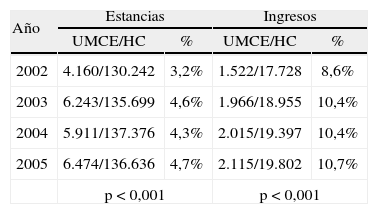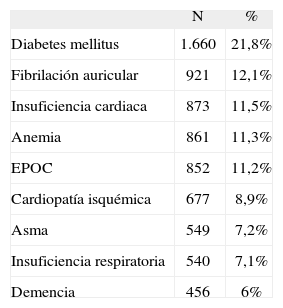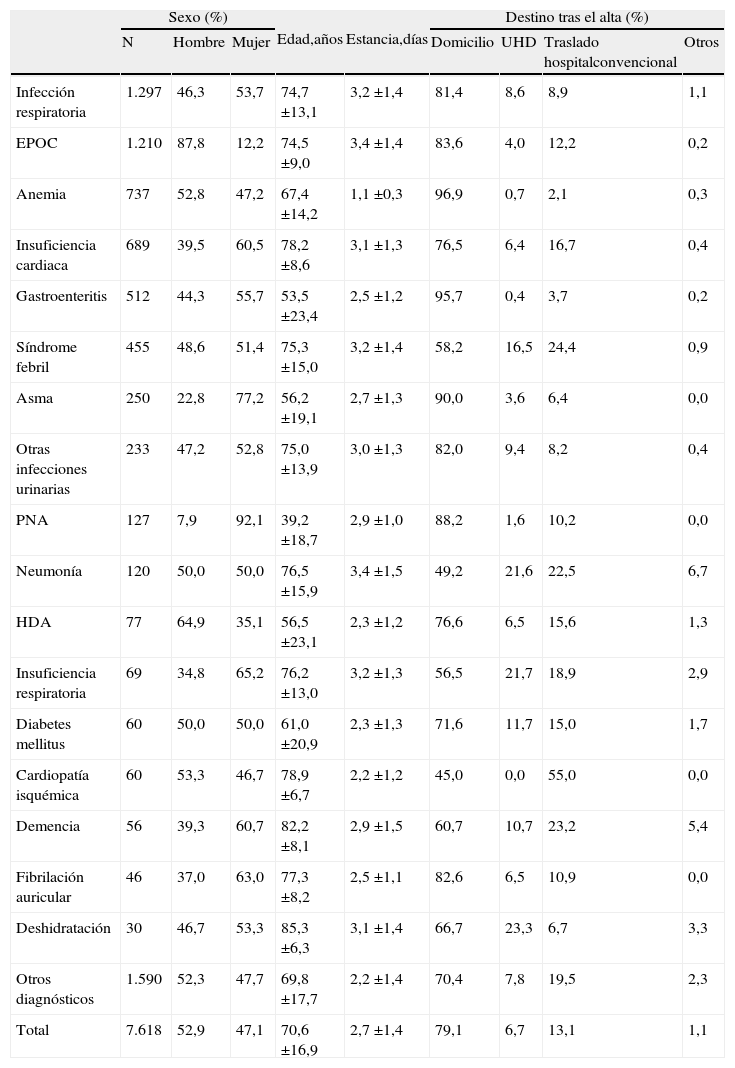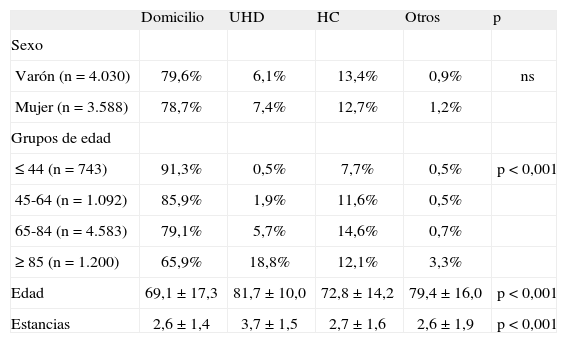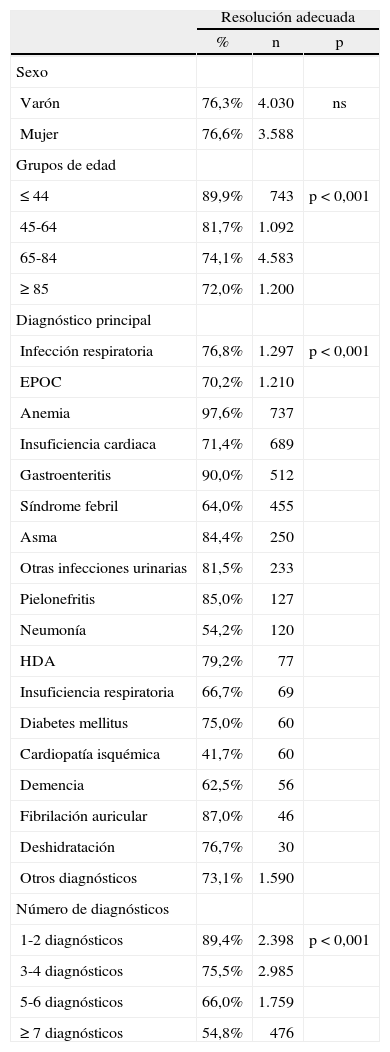La Unidad Médica de Corta Estancia (UMCE) es una alternativa a la hospitalización convencional. El objetivo ha sido analizar la evolución de las estancias e ingresos en una UMCE, describir las características de los pacientes ingresados, estudiar su asociación con los días de estancia y el destino posterior, y evaluar la adecuación en la resolución del ingreso.
Material y métodosSe ha realizado un estudio descriptivo (2002-2005), analizándose edad, sexo, destino al alta, diagnóstico principal y evolución de las estancias e ingresos a lo largo de los años. Para establecer la adecuación en la resolución de los procesos se han considerado las estancias y el destino. Los datos se analizaron con el programa SPSS.
ResultadosExiste un incremento en el número de ingresos y estancias durante el periodo de estudio. La media de edad de los 7.618 pacientes fue 70,6 ± 16,9 años, y la estancia 2,7 ± 1,4 días. Uno de los diagnósticos más frecuentes ha sido la enfermedad pulmonar obstructiva crónica (EPOC) (15,9%). El 85,9% fue alta a domicilio. Ha presentado una resolución adecuada el 76,4% de los pacientes, encontrándose diferencias estadísticamente significativas en relación a la edad, diagnóstico y número de diagnósticos.
ConclusionesSe ha observado un incremento progresivo de las estancias e ingresos. En los más jóvenes la resolución del ingreso fue adecuada en un 90%, bajando hasta un 72% en los más mayores. El número de diagnósticos, determinados diagnósticos y la edad dificultan la resolución adecuada del proceso.
The Short-stay Medical Unit (SSMU) is an alternative to conventional hospitalization. This study has aimed to analyze the evolution of admissions and duration of stay in a SSMU, to outline the characteristics of the patients while studying their relationship to length of time spent in the unit and their destination on discharge as well as to assess how appropriately their cases were resolved.
Material and methodsA descriptive study was carried out (2000-2005), analyzing their age, sex, destination on discharge and main diagnosis as well as the evolution of admissions and length of stay over this period. In order to determine how appropriately each case was resolved, length of stay and destination on discharge were considered. The data were analyzed using the SPSS program.
ResultsDuring the study period there was an increase in the number of admissions and in length of stay. The average age of the 7,618 patients was 70.6 ± 16.9 years and the average stay 2.7 ±1.4 days. One of the most frequent diagnoses was chronic obstructive pulmonary disease (COPD) (15.9%). On discharge, 85.9% of patients were sent home. A total of 76.4% of cases were resolved satisfactorily, with significant statistical differences related to age, diagnosis and number of diagnoses.
ConclusionsA progressive increase in admissions and length of stay was observed. Ninety percent of the cases of the younger patients were resolved satisfactorily, this decreasing to 72% for older patients. The number of diagnoses, specific diagnoses and age caused some difficulty in reaching an appropriate resolution.
Article
Diríjase desde aquí a la web de la >>>FESEMI<<< e inicie sesión mediante el formulario que se encuentra en la barra superior, pulsando sobre el candado.

Una vez autentificado, en la misma web de FESEMI, en el menú superior, elija la opción deseada.

>>>FESEMI<<<



